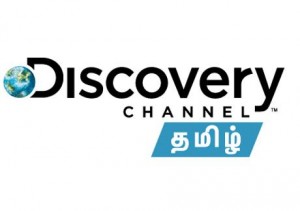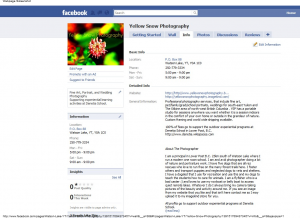As technology continues to develop, the mediums through which science is communicated have been constantly evolving. Radio stations, podcasts, and even entire television channels have been devoted to broadcasting science news. In 1995, Discovery Channel was launched on the television screen, with other science-related television channels following close behind, such as the Science Channel and the National Geographic Channel. These different forms have been extremely effective in engaging people and educating them on the latest discoveries in science. What new medium for science communication is effectively engaging people in the 21st century? Social Media.

The logo for the popular science television channel the Discovery Channel. Image Source: Wikimedia Commons. Artist: M.K. Dan.
Social media has become one of the most effective ways people are engaged in the latest science findings today. A very popular form of science-communicating social media that is now on the scene, is the Facebook page called “I F’ing Love Science”. A Facebook page is used in order for people to connect with one another and share information. This Facebook page, launched in 2012 by Elise Andrew has already gathered more than 10 million “likes” from science enthusiasts all over the world. An interesting science-related fact and photo is posted on the page at least once, if not several times a day. In many ways this Facebook Page is extremely effective in communicating science to today’s society.
One of the main aspects of the Facebook Page that make it so successful are the ways in which it is able to catch people’s attention. Firstly, it uses extremely intriguing one to two sentence headings that are hard to turn away from, and are easy to read as one quickly scrolls through their news feed; headings such as “Scientists have produced a net gain of energy from a nuclear fusion reaction!” and “Scientists are developing a blood test that can help predict if you are going to die within the next five years”. Secondly, the Facebook page posts almost always incorporate a photo that complements the heading tremendously well, stimulates curiosity, and leaves an even greater lasting impression on you than the heading alone. Lastly, Facebook itself is a very reliable outlet for ensuring that information will be seen, as most people check it regularly.

Facebook pages are great for sharing information. Image Source: Flickr Commons. Artist: Bruce McKay.
Not only does the “I F’ing Love Science” page unquestionably grab people’s attention, but it also enables growth in the knowledge of its readers. On almost all of its posts the Facebook page provides additional, relevant hyperlinks (including to the original source) that the reader can click on. Additionally, perhaps one of the most unique and vital aspects of the Facebook page is that its readers are able to comment on any topic posted. Not only does this peer interaction allow for growth in the understanding of the reader, but it also increases discussion and stimulates new ideas on the subject itself.
As the mediums for science communication have been continously evolving, social media including the Facebook page “I F’ing Love Science” has come to the forefront of effective science news broadcasting in today’s society. It was recently announced that “I F*ing Love Science” will be the motivation behind a new television show on the Science Channel. Connecting these two mediums, who knows what success is yet to come for the world of science communication!

Comedian Craig Ferguson will be an executive producer on the brand new television series “I F’ing Love Science”. Image Source: Flickr Commons. Artist: Gage Skidmore.
-Maria Bernard
